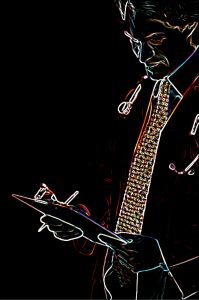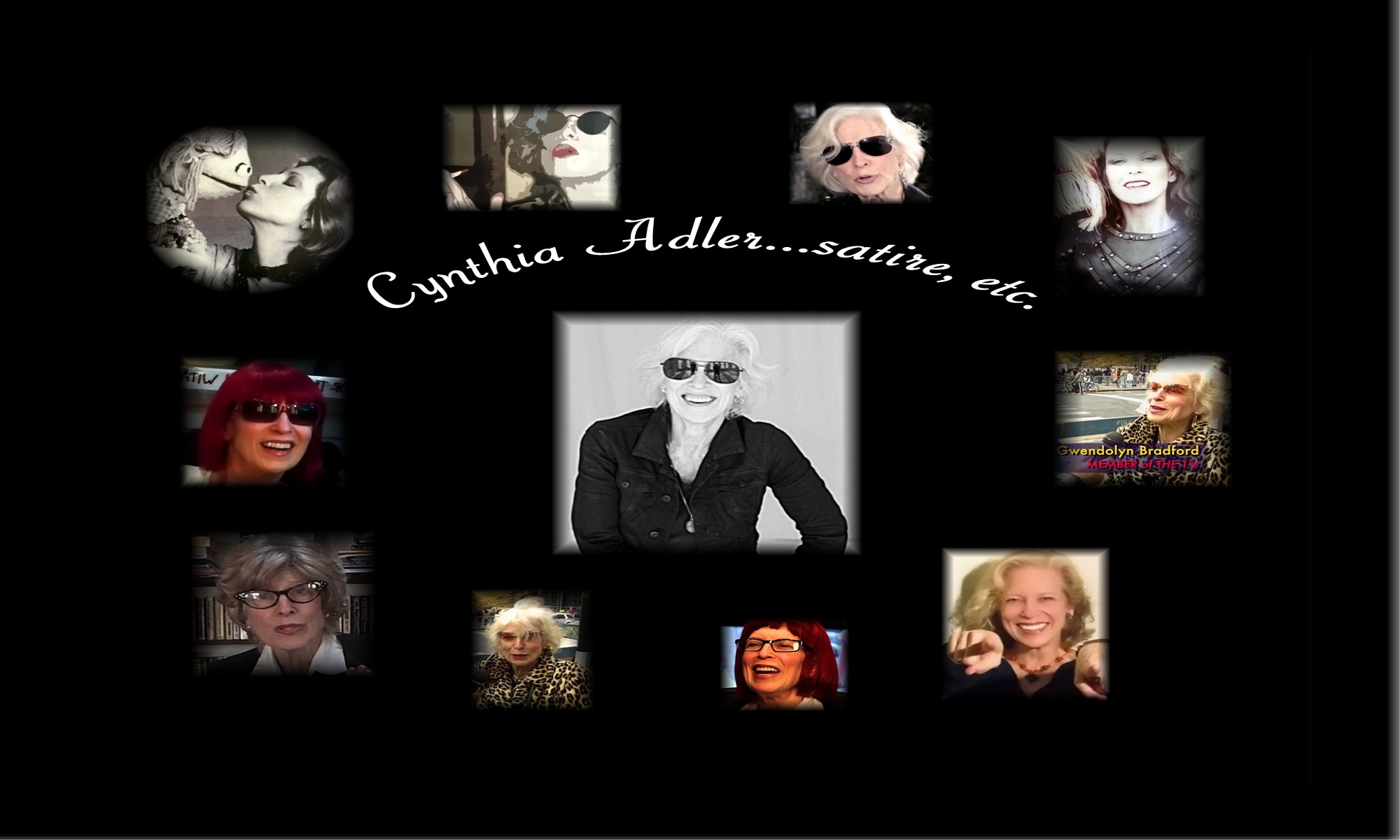Lois Flannery Says “Forget It!”
Lois Flannery was put into the Carter Mental Hospital, in Spartanberg, South Carolina, when she was thirty years old. She had tried to kill herself three different times and failed, and she was hallucinating daily. Her devastated Irish parents brought her to many priests and healers for exorcism, to ward off any evil or idle spirits that might have gotten hold of her, but nothing worked in the long run. She had excelled as an athlete in grade school and was not unpopular with classmates, but at the age of thirteen, bizarre hallucinations about the end of the world began and her condition escalated quickly into paranoia and extreme fear.
At first her parents thought it might be the onset of menstruation, but even after Lois got her period, she could not connect, and was constantly seeing frightening visions. She was then medicated by the family doctor for fifteen years…anti-depressants, vitamins, shots…and much of this helped. But Lois couldn’t cope with even two years of College, couldn’t hold a job, and couldn’t live by herself. When Lois turned twenty-seven, she stopped the medications slowly and her first suicide attempt occurred. She swallowed a half bottle of aspirin one afternoon and got severely ill. Her mother found her unconscious in her bedroom, and called the paramedics, who saved her life.
A second and third attempt failed in other ways, and Lois was admitted to Carter, a month before her thirtieth birthday. In this mental hospital, she found many other “residents” who had problems similar to hers. Rennie Cohen suffered from severe manic depression and a cutting syndrome, where she would slice up her thighs and forearms whenever she got her hands on something sharp. Toni Strega thought that she was the First Lady, and had been kidnapped by her parents and held hostage at Carter. Stefanie Lathrum told the staff that she had lived on Venus for many years and that the Space Program had been her destruction, and that the United States space ships removed her from her planet and put her into Foster Care. There were others, but Lois’ room was the closest to theirs, so these three became her “tribe.”
All of these women were thirty years or younger, Toni being a mere twenty-two, but Lois felt that she was probably the most sane of the bunch. Lois could see their craziness, but not hers. She knew she had problems, but she wasn’t aware of how deep they were.
Carter had a work force of really well trained and empathetic women. The doctors on staff didn’t push too many medications onto their patients, and tried to delve into their psyche’s with a caring exploration and a loving attitude.
The first year was very hard for Lois. She was non-communicative much of the time, and she slept most of the day. She missed her parents and some of her friends, but she had no more thoughts of suicide. The hallucinations, some that had brought her to tears each day, continued for thirty-five years more.
Lois’ father died three years before her sixty-fifth birthday. Toni Strega had been dealing with Parkinson’s Disease for the past ten years, Stefanie Lathum was still at Carter with no improvement, and although Rennie Cohen was almost back to “normal,” she wanted to stay on for a bit longer, because she said she felt safe there. Seven other women had been admitted around the same time that Lois was. One woman, Reba Kaufman was forty-two when Lois first came to Carter, and she was admitted for “split personality syndrome.” She became four different people at different times during the day or week, and one of those people was a rhyme-singing kleptomaniac. Reba would troll the unoccupied rooms whenever she could get in one, and take little things, often toiletries that were lying  around in the bathrooms. She would hide these things all over Carter, and sometimes had to be strapped to her bed when people were in the dining hall just to keep her out of their bedrooms.
around in the bathrooms. She would hide these things all over Carter, and sometimes had to be strapped to her bed when people were in the dining hall just to keep her out of their bedrooms.
Reba was now seventy-seven years old, but amazingly enough, she didn’t look a day over fifty-five. Toni was now fifty-seven, but even with the Parkinson’s, looked thirty-nine. Stefanie Lathum looked fifty as well, and Rennie looked as if she were in her late forties. But Lois Flannery was the winner of this lottery. She was turning sixty-five, and she didn’t look a day over forty-five. Visitors would wonder, “how could this be?” But the answer lay in the simple truth, that these women, all of them, did not know how old they were. They had no concept of age. They didn’t look in a mirror to check for wrinkles or dryness or hanging skin, they never counted birthdays or years, they didn’t even own a calendar and because they didn’t know any better, they all believed themselves to be the same ages they were when they checked in to Carter.
Lois actually looked even lovelier than she had when she first arrived. Sammi Donelly, one of the Aide’s that worked closely with Lois, and turning sixty herself, tried to figure out why none of these women seemed to age much.
For Lois’ sixty-fifth birthday, her mother and her cousin Molly, who was a very successful Wall Street trader, wanted to do something very special for Lois. They heard of an amazing Healer in Naples Florida, named Santo de Dio, which translated to “Saint of God.” He was said to be a disciple of John of God in Brazil, and was supposed to have healing powers that were amazing. Hundreds and hundreds of people flocked to him each day to receive healings for everything from Cancer to the loss of limbs.
Molly was going to take Sammi with them as well, so that Lois could be taken care of day and night. She booked them all into the Ritz Carlton for four days, into a large suite with two bedrooms overlooking the water. Molly and Lois’ mother Orla had one room and Lois and Sammi the other. It was luxurious and comfortable and the plane ride didn’t seem to affect Lois at all. Lois talked to the flight attendant’s and some of the other passengers. No-one would have known that she spent so many of her days in darkness and fear.
The women arrived in Florida on a Tuesday afternoon, and spent the rest of the day in their suite, ordering food and then getting a good night’s rest. The next morning, they got up very early and drove to a beautiful little Casa near the beach about ten minutes from the hotel. There were already about two hundred people lined up to see Santo de Dio. Everyone was dressed in white, Lois’ family as well, except for Sammi, who had on a pink jacket over her grey shirt. They stood in line for what seemed forever. Then the line started to move. Each person would pass in front of Santo and he would tell his assistant what they should do…go to a room to sit quietly to be cleared or to take some herbs and go to bed…many different things, to evoke the healing spirits.
When Lois reached the head of the line and faced Santo, he told her to stop. He looked at her for a few minutes, passed his hand up and down three times, and told her to go to a room in the back and to sit with her eyes closed. He also gave her a prescription for some herbs at the Casa, that Sammi held on to until she could get Lois settled into the back room.
Lois sat with about sixty other people, on long benches that looked like church pews, and closed her eyes. An instructor told the group not to open them until they had permission from Santo himself. So Lois sat there and thought about her friends at Carter. At one point, about fifteen minutes in, her mind seemed to clear and she started to see shapes. She saw cloud-like images flowing before her. Fuzzy white balls moving slowly that seemed to encircle her eyes and her whole head from the inside. She just sat there, enthralled, watching the movement. After what seemed like a rather short time, Santo de Dio came into the room and told them that they could open their eyes. It felt like a short half hour to Lois, but it was actually an hour and a half.
Lois felt very tired. She started to feel a veil of blackness descend upon her, but as quickly as it came, it lifted. It was as if some spirit pulled the darkness from around her,  some angelic energy that she could not see. She was given a prescription for some herbs and told to go back to her room and sleep until dinner. It was early in the day. Sammi took Lois to the dispensary to get the herbs, brought her to her room, gave her five pills with some special healing water that was provided and left her to sleep.
some angelic energy that she could not see. She was given a prescription for some herbs and told to go back to her room and sleep until dinner. It was early in the day. Sammi took Lois to the dispensary to get the herbs, brought her to her room, gave her five pills with some special healing water that was provided and left her to sleep.
She had crazy dreams. Some dreams were frightening and some were magical and delightful. This went on for the next two days. Each time Lois would go before Santo de Dio, he had her go into the healing chamber and gave her a new prescription. On the fourth day, a miracle occurred. Lois started to cry. She cried for a few hours and then when it was time to drive home, she told her mother that she didn’t need Carter anymore.
Lois was completely clear. She had gone from a depressive organism, to a light being. She had a clarity, a sanity, and a calm, that even her cousin Molly couldn’t believe. They took Lois back to Carter and put her through a series of tests. The staff could not believe that  this was the same woman who had been there three days ago, having spent thirty-five years at Carter. When she saw Rennie and Tony that afternoon, they could hardly relate to her. She wanted to heal them, take them to Santo de Dio, pull the madness out of their cells, but she knew she could not even impart to them what she had experienced.
this was the same woman who had been there three days ago, having spent thirty-five years at Carter. When she saw Rennie and Tony that afternoon, they could hardly relate to her. She wanted to heal them, take them to Santo de Dio, pull the madness out of their cells, but she knew she could not even impart to them what she had experienced.
That night, Lois Flannery came home for good. She tried to make sense of what had happened to her when she turned thirteen. That fateful journey of self-hate and fear, that finally drove her to suicidal madness. Lois thought of all the things that had happened to her at Carter, the therapy sessions, laser treatments (her mother had made sure Lois was not given any shock therapy) and the hours of tranquilizers, homeopathic inhalers and infused baths. She knew she wanted to do something with her life that might help other people, other women who were obsessing and fearful, other women who were descending into the pit of darkness.
Two nights later, it came to her. She was reading a magazine in bed, and it was talking about how “aging” faces were just not an option anymore. How, if you didn’t take care of those unwanted years with surgery, fillers or other forms of facial rejuvenation, you would be discarded, left behind, and ultimately invisible when it came to work or even any kind of romantic involvement. The article had pictures of women in their late forties, their fifties, and women in their sixties. Nothing beyond that. Many of them looked good, but most looked a bit haggard and creased, as well.
Lois thought about her face. Here she was in her mid sixties, having had no treatment at all, and looking almost twenty years younger. Why, she thought. Why did she, Rennie, Reba, Toni, Stefani, and so many others, look so much younger than their years? Lois started to read. She read about all the studies done in insane asylums for the past fifty years, and how so much of the visible signs of stress and fear, although rampant in those facilities, didn’t show that much on the faces of the women who were living there. And why? That’s when she read the paragraphs that spoke of those women in those facilities. Women who just didn’t know their age, or even care. Women who never checked themselves out in the scarcity of mirrors there, or constantly worried about the next wrinkle, or the next falling neck flap, or the thinning of a lip.
And she knew what she had to do.
Lois started a movement. She first wrote a book called, “Forget It!” It told her story, from beginning to end. It told about the suicide attempts, about the deep depression and about not having the will to go on. It told about her mother’s deep need for perfection, and her father’s gambling addiction. It told about her brother’s sexual advances toward her when she was eleven and it told about Aunt Ginger’s compulsive eating disorder, which bellowed her up to two hundred and fifty pounds. And then it talked about her time in Carter, all her friends, all the “inmates,” as they were referred to. And then Lois talked about our faces and bodies. How everything lives on our faces when we worry and obsess, count the years constantly, give the mirror the role of jury and judge, and give our power over to the “beauty beasts,” the cosmetic companies, magazines who get paid by them, and the doctors who need to pay a mortgage or get a new Lexus.
Then Lois went on to talk about why, when you cannot obsess, because you cannot remember, or you do not inspect, because you never think to (you are too preoccupied with whatever neurosis is jolting your brain) you don’t show the same kind of years. Your body doesn’t constantly hear the message of ”OMG, I’m looking older!” so it doesn’t play out that command.
So even though her message was one that was rather unconventional, it made perfect sense. “Pass up the mag’s, minimize the mirrors and swipe the surgeons.”
“Flannery Forget It” groups popped up all over the country, women finally giving themselves acceptance and dropping their year counting. A Flannery Forget it-ism was, “when anyone asks your age, just say, “sorry, I just can’t remember…” and after a while, oddly enough, many women didn’t.
Lois Flannery’s life was made into a Broadway musical starring Lady Gaga, and the magazines terrorism on aging had to come to a close, since no one was buying it anymore. The cosmetic companies had to use much more “natural” and older models, and most of the plastic surgeons in America had to settle for a Honda.
While Lois celebrated her eighty-fifth birthday with Oprah and the Pope (who had no idea what birthday it actually was…) she looked back on all those years.
And she knew.
She knew there was a reason.
And so did Santo de Dio. He knew about her book, and what it would become, long before she would ever write it.
But he never told her.
Cynthia Adler
“Mary Lou Logginberry Spaces Out…and Other Crazy Stories” (Stories for Women…) book excerpt.
